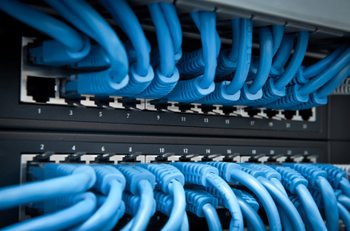
Penn Law Professor argues for “network diversity” rather than “network neutrality.”
To capture the Internet’s burgeoning scope requires numbers beyond imagining. Consider that the Internet’s explosive commercial success has nearly exhausted its available 4.3 billion unique addresses. So to accommodate more use, the protocol that knits the network together is being retooled to allocate 79 nonillion times more addresses, enough to provide a septillion addresses per square meter of the earth.
If those numbers, or the idea that the Internet is glued together by something called a “protocol,” sound unfamiliar, that’s because to most of us they are. And according to University of Pennsylvania Law School Professor Christopher S. Yoo, that lack of familiarity presents a problem.
How can politicians and regulatory agencies draft appropriate rules for a communications medium if they don’t appreciate the nuances of how it actually works?
Yoo’s short answer is, they can’t.
In a new paper, “Network Neutrality and the Need for a Technological Turn in Internet Scholarship,” Yoo calls for those engaged in debates over Internet regulation to develop a better grasp of the network’s underlying architecture and technology.
The concept of “network neutrality” has dominated the Internet policy debate for the past several years. While the controversy is complicated, neutrality proponents, including such online giants as Google, Amazon and eBay, generally maintain that all information flowing across the Internet should be treated the same. They argue that network providers, such as Comcast, Verizon and AT&T, should be prevented from using their control of Internet pipelines to provide tiered levels of service or even block out certain applications or content.
Critics of neutrality, including Yoo, argue that allowing network owners to prioritize certain traffic is actually a good thing: It helps to overcome network congestion, guarantee quality of service, and contain costs — all of which ultimately benefits consumers.
In his new book chapter, which explores both the history and current state of the Internet, Yoo advocates a policy of “network diversity.” He maintains that network providers should be permitted to “experiment with a variety of different forms of network management unless and until the evidence indicates that those practices are harming consumers or competition.”
For Yoo the debate over net neutrality is skewed by a misunderstanding of the Internet’s history and structure. “Unfamiliarity with the Internet’s architecture has allowed some advocates to characterize prioritization of network traffic as an aberration,” he writes, “when in fact it is a central feature designed into the network since its inception.”
He notes, for instance, that a “type of service flag” was built into the original Internet protocol in order to attach different levels of priority to particular packets of information. Moreover, in 1987, when a spike in traffic driven by the advent of personal computers caused congestion on an early version of the Internet, system operators reprogramed routers to give traffic from the network’s original dedicated user terminals higher priority than PC traffic until additional bandwidth could be created.
Yoo points out that data-rich video content presents the same sort of unanticipated congestion problem on the Internet today. He maintains that network providers have responded by attempting to control traffic in ways that should give net neutrality proponents pause.
For instance, he notes that the wireless broadband service provided by Amtrak to passengers on its Acela trains limits file downloads to 10 MB and blocks access to streaming media. The use restrictions, Amtrak maintains, are intended to “maximize the amount of onboard bandwidth available to all passengers.” That, says Yoo, is a reasonable way to promote minimum levels of quality of service by preventing a small group of users from consuming all of the available bandwidth.
Similarly, he notes, AT&T U-verse, with less bandwidth than cable companies or Verizon’s $23 billion fiber-optic FiOS network, reserves bandwidth for its own video offerings and gives its video traffic priority over other traffic.
That’s the type of conduct that net neutrality proponents say would allow a network provider to gain an unfair competitive advantage by favoring its own content over others. And yet, Yoo points out, these practices have allowed AT&T to avoid having to spend the additional $17 billion it would cost to deploy fiber-based solutions like FiOS. Regulators, he insists, would be wise to permit networks to use prioritization to employ more efficiently the capacity that already exists, as AT&T has, rather than imposing more costly solutions.
“Given the ever-growing demand for bandwidth and the tightening of the capital markets associated with the ongoing recession, policymakers should avoid regulations that make higher capital investments the only solution to the problem of video-induced traffic growth,” Yoo writes.
Tiered pricing, he observes, allows for more efficient use of bandwidth. It makes services more affordable by allowing them to be offered at a lower price point. At the same time, it provides consumers who wish to run more demanding applications with the choice of a higher-quality service at higher cost.
Internet scholars and regulators, he concludes, “must deepen their appreciation for the technological context surrounding these [network management] practices if they are to make an intelligent assessment of their likely impact and whether they represent good policy.”



